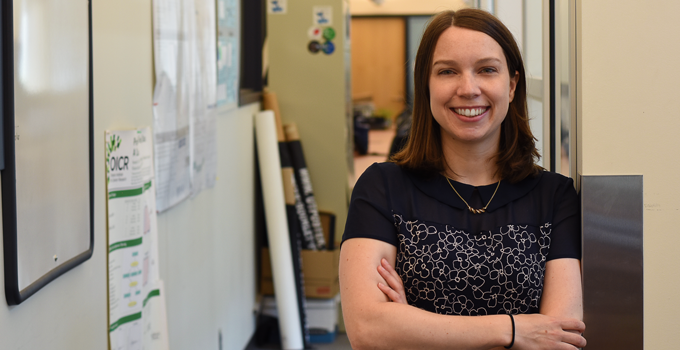OICR researcher looks into what non-tumour cells can tell us about breast cancer

When a biopsy is drawn from a patient, it consists of a mix of cancerous and healthy cells, like fat and blood cells. Researchers are often interested in diseased cells, but without looking into the surrounding tissue, they could be missing part of the story.
Natalie Fox, a PhD candidate at OICR, is investigating what we can learn from the cells surrounding cancer cells.
“When we look into a patient sample computationally, we see distorted signals because of overlapping data from many different types of cells,” says Fox. “We need to dissect the parts we want to study, but instead of using a knife or a laser, we use computers.”
Fox and collaborators have analyzed nearly 1800 tumour samples from patients with breast cancer, examining the transcriptome of tumour cells and the cells around tumours – or the tumour’s microenvironment.
Her study, recently published in Nature Communications, reveals the landscape of transcriptomic interactions between breast cancers and their microenvironments. Her study also sheds light on associations between these transcriptomes and patient survival, gene mutations and breast cancer subtypes.
“We now have a clearer picture that tells us more about the breast microenvironment than we’ve known before,” Fox says. “Bit by bit, we’ve analyzed and scrutinized these data, then assembled these bits into a comprehensive landscape.”
Fox found that mutations in cancer genes such as CDH1 and TP53 are associated with changes in the transcriptome of the tumour’s microenvironment. She says more research is needed to clarify the biologic rationale behind her observations, but her work has set the stage for researchers to do so.
“Above all else, this work demonstrates an important approach for improving our understanding of associations between the tumour and the microenvironment,” Fox says. “We presented a framework that others can use to analyze the tumour microenvironment in their cancer of interest and potentially develop new biomarkers for predicting cancer patient outcomes.”
